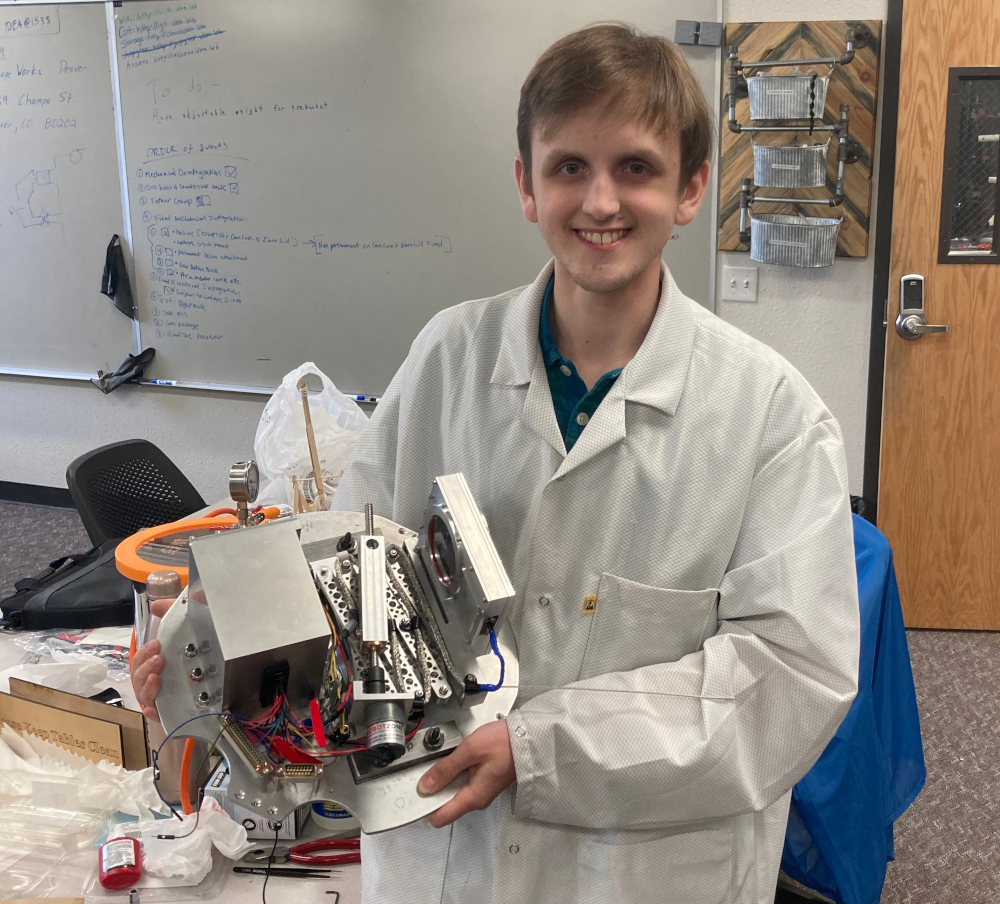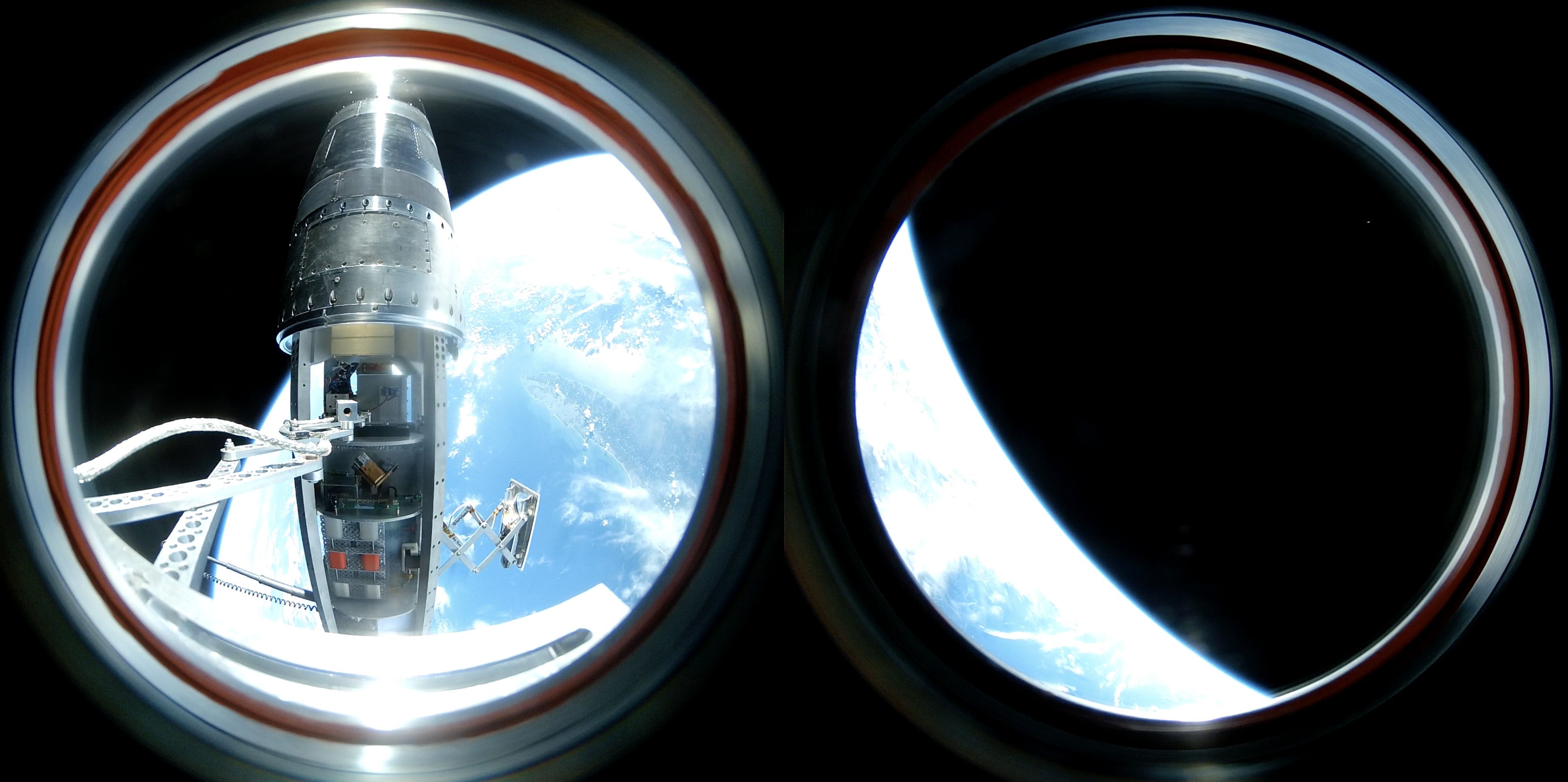
Konstantin Zaremski
Computer Science StudentDenver, Colorado
Projects/ RockSat-X 2020
I was brought on in May 2021 to help with the final integration of Red Rocks Community College and Arapahoe Community College's payload for the RockSat 2020 mission.
Mission
The team's payload is called VRSE (Virtual Reality Space Experience), which extends an arm with a camera 16" out from the body of the rocket to record a short video at the highest point in the rocket's orbit. The timing for extension/retraction of the arm
Flight Timeline:- 30 seconds before launch (T-30s) power is applied to all payloads on the rocket. The VRSE's computer boots up and begins to listen for further signals.
- 85 seconds after launch (T+85s) power is applied to the first timer event line triggering arm extension and starts camera recording.
- 261 seconds after launch (T+261s) power is applied to the second timer event line which triggers arm retraction, stops camera recording, and transfers a low resolution copy of the camera video to the computer for redundancy.
- 330 seconds after launch (T+330s) power is applied to the third and final timer event line which starts the safe shutdown of the computer and all other electronic systems in preparation for re-entry.
My Contributions
I was recommended to the team because of my experience with Python and Linux.
- I refactored the existing code for camera and arm control to be more robust by adding a logging method, implementing concurrent arm extension and recording using threads, and properly handling exceptions among other improvements.
- I applied my Linux system administration skills to create a systemd service unit file that would allow for the control script to start as a part of the control computer's boot process.
- I incorporated the camera mounting and video transfer into the Python script and had it copy files more dynamically to account for system clock inaccuracies.
 The fully assembled payload and I after a successful test.
The fully assembled payload and I after a successful test.
Still Image Near Apogee
 Please see NASA links below in the conclusion section for full video.
Please see NASA links below in the conclusion section for full video.
Conclusion
After passing NASA's own testing for aerospaceworthiness in the Summer of 2021, the payload launched on August 19, 2021 and successfully delivered a 1:57 high resolution virtual reality video and sensor data from the edge of space.
- Hitch a Virtual Ride on a NASA Sounding Rocket – View Earth From 98 Miles Up (12/20/2022)
- Official Video: 360 View from a NASA Sounding Rocket (12/6/2021)
- NASA Livestream of the Launch (8/19/2021)
- Shore Daily News: Sounding Rocket Launch (8/19/2021)
- Mission accomplished: RockSat-X team witnesses experiment launched into space (9/28/2021)
Source Code
The source code that ran the payload is freely available on GitHub. The original coder is the owner of the repository. https://github.com/ShekelsBot/RockSat2020